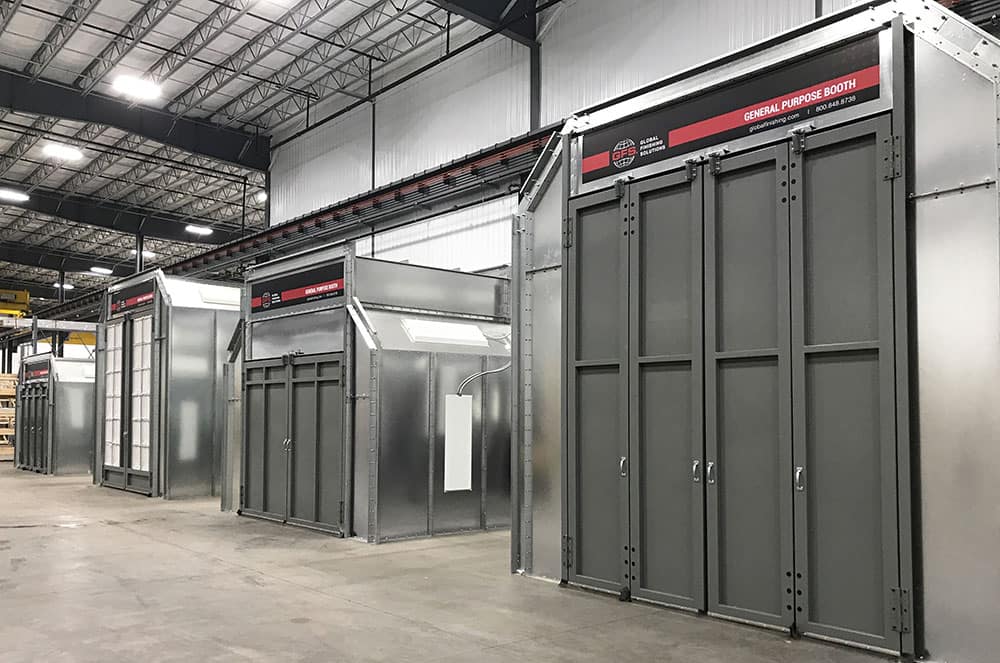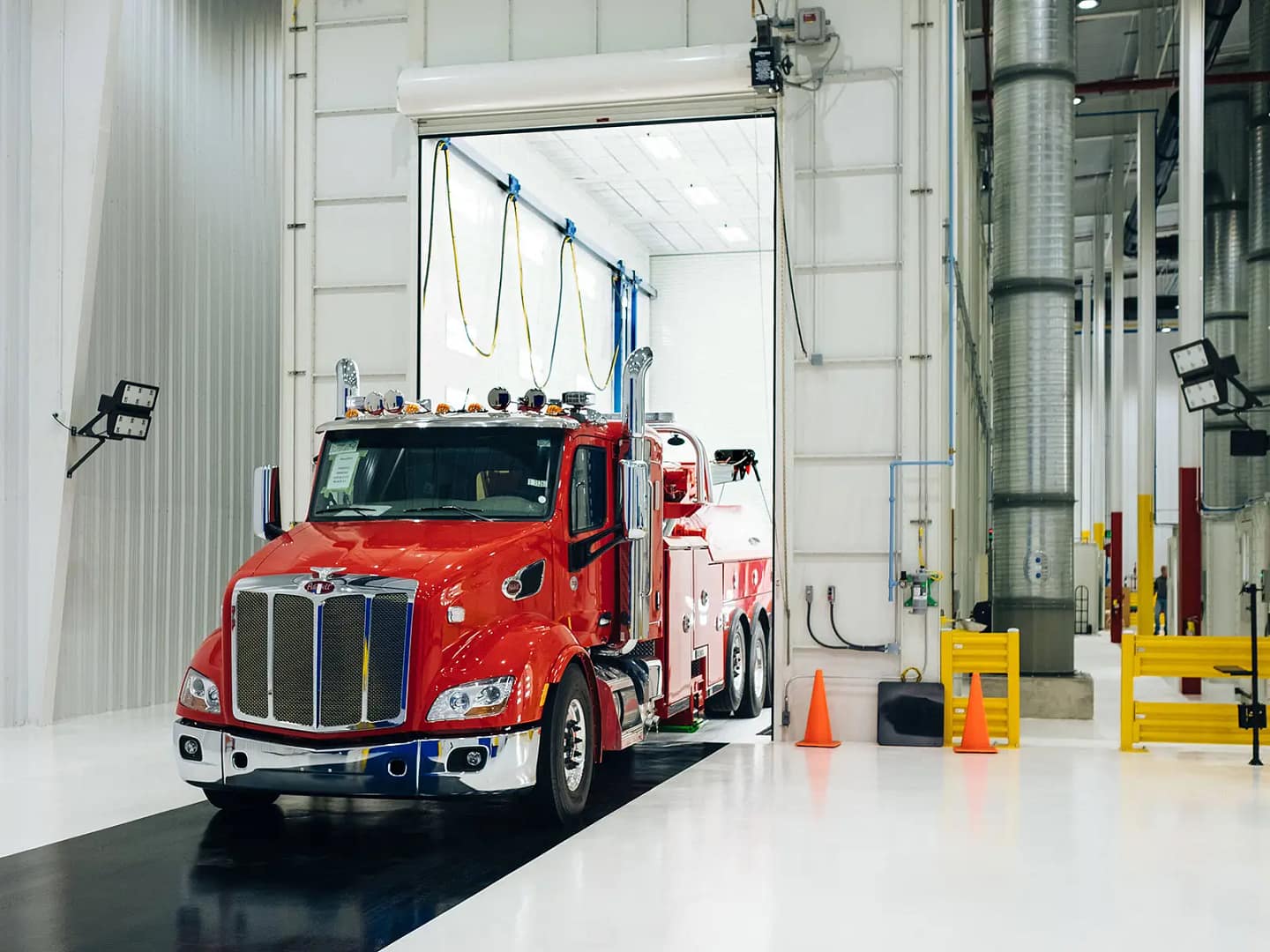
The primary purpose of a paint booth is to contain hazardous materials like overspray and volatile organic compounds (VOCs), preventing fumes, chemicals, gases and vapors from spreading into the shop or environment outside. In addition to protecting the environment, complying with local regulations and codes, and keeping your employees and facility safe, enclosing the painting process in a booth results in better quality paint jobs that are free of contaminants.
So, where should you start when buying a paint booth? The following seven steps will help guide you through the process:
1. Research paint booth suppliers
Although you can do a lot of planning independently, it is helpful to begin looking into booth suppliers and their distribution options at the beginning of the purchase process, as they will provide guidance to help you determine the size, airflow and features that meet your needs and price point.
When selecting a spray booth supplier, be sure to choose a company that is experienced in the industry, has engineers on staff, validates the performance of their products and works with national safety and environmental organizations.
You want to choose a company that is capable of providing local support through either their own staff or distributors. They should also offer installation, maintenance programs and startup training for your new paint booth.
2. Determine the best size for your future paint booth
Identify the type and size of the products you will work with to make sure there is adequate space and airflow through your future paint booth:
 For aviation applications, GFS recommends that you determine the dimensions of the largest aircraft you need to paint, then add a minimum of 10 feet to all sides of the aircraft for clearance. You will also need to take into account the additional space needed to accommodate scaffolding or personnel lifts. When possible, paint booth walls and ceiling are designed to conform to the shape of the individual aircraft, providing cost savings on the capital equipment as well as operational savings by reducing the amount airflow required in the booth.
For aviation applications, GFS recommends that you determine the dimensions of the largest aircraft you need to paint, then add a minimum of 10 feet to all sides of the aircraft for clearance. You will also need to take into account the additional space needed to accommodate scaffolding or personnel lifts. When possible, paint booth walls and ceiling are designed to conform to the shape of the individual aircraft, providing cost savings on the capital equipment as well as operational savings by reducing the amount airflow required in the booth.3. Understand your process
Different processes and applications will influence the type of paint booth you choose. Liquid applications typically use a dry filter paint booth where an exhaust fan draws paint overspray to a filter bank (in the booth walls or floor pit) and captures it. Powder application processes typically require multiple layers of filtration, ending in either a bag filter or a powder collector, with no need to exhaust the air outside of the building.
4. Define your space
Not only should you consider the working dimensions inside the booth, the space around the exterior of the booth is also important. Take the following factors into account when deciding on the layout and location of your paint booth:
Remember, any complementary products like Paint Mix Rooms and Hazardous Material Storage Buildings will require additional space.
5. Decide on the type of spray booth you need
Paint booths range from enclosures small enough to paint a cell phone case to ones large enough to paint a C-17 military cargo plane. Start by identifying the primary industry you work in. This will help to narrow down the options available to you and help you find spray booths with the features and options that matter most to you.
6. Pick an airflow
After you have selected the industry and type of booth that fits your application and budget, you can select an airflow style. This may include cross draft, semi-downdraft, side downdraft or downdraft. You will also need to decide whether you need your booth pressurized or heated.
To ensure that the product you are finishing gets the best possible finish, look for spray booths that provide laminar airflow, meaning that the spraying chamber is fully engineered to keep all the air moving parallel in the same direction, without turbulence that results in unpredictable spray patterns.
7. Consult local authorities
As you work through the installation process, be sure to consult the local authorities with jurisdiction and expertise in local codes. If you are building a new facility and also installing a paint booth, working with the building inspector up front will help with permitting and make it easier to be aware of any additional safety requirements beyond general booth requirements.
In addition to ensuring that your facility complies with local codes, certain states and cities may offer grants, financing or rebate programs for paint booths that meet and exceed certain environmental guidelines.
To learn more about the different types of spray booths available, or to get in contact with a distributor in your area, please visit globalfinishing.com.
Share on facebook
Share on google
Share on twitter
Share on linkedin
One of the best ways to highlight your business is through a story that you can share across your online platforms. It humanizes your business and shows that your business can make a meaningful impact. Your testimonial would be used as a project profile on the GFS Booth Blog and can be shared on your website and/or social media channels.
Complete this form and we’ll be in touch to showcase your company.

Shop a variety of GFS aftermarket products, including booth protection products and mobile accelerated curing units. And enjoy the convenience of fast and free ground shipping throughout the contiguous United States.

Located at GFS’ headquarters in Osseo, Wisconsin, the Center for Excellence is an innovative facility featuring an automotive refinish training center, as well as a separate space dedicated to technical product training.

GFS is continuously searching for talented, ambitious individuals to join our team. We aim to provide our employees with every opportunity to make an impact on the company and find their niche along the way — weather in a production, field services or an office position.